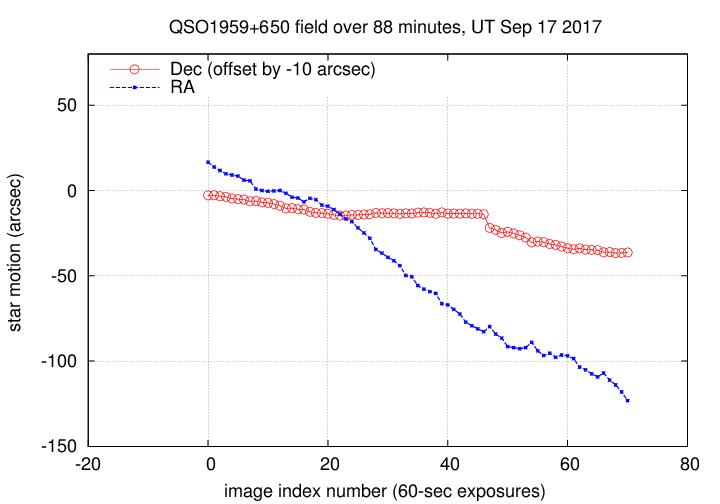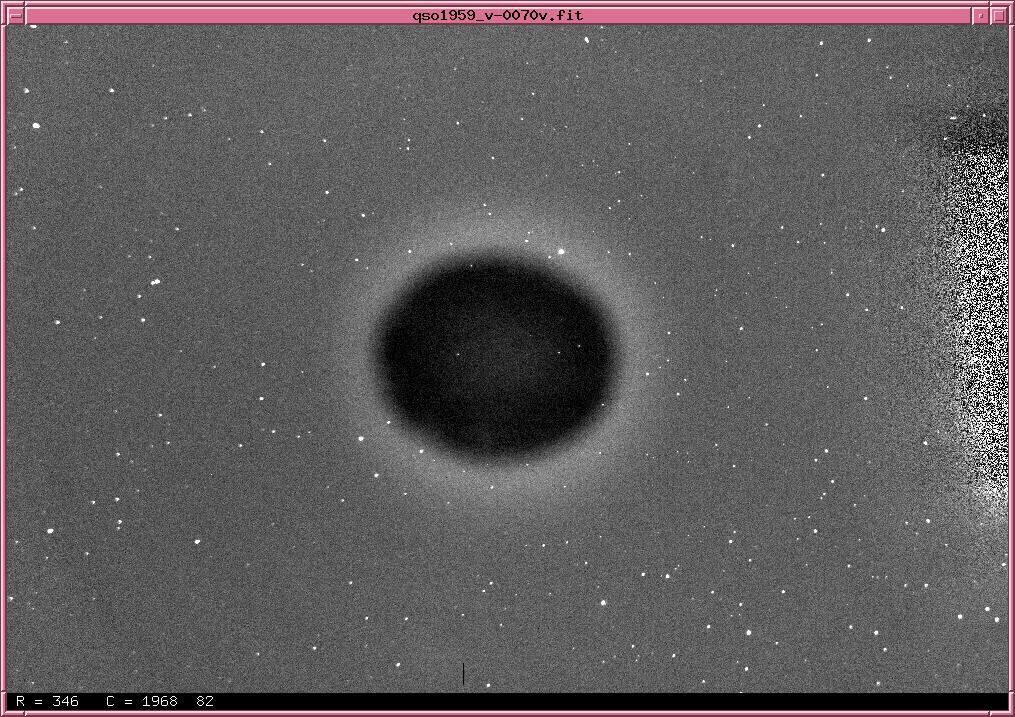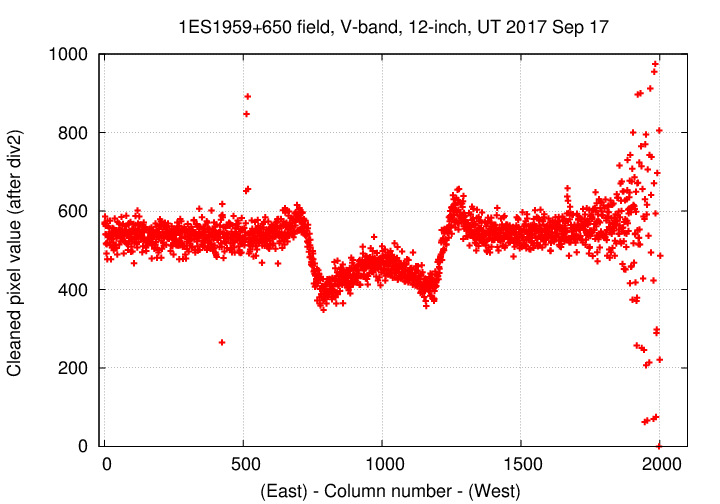
On the night of Sep 16/17, 2017, I used the RIT Observatory telescope and cameras to run a few tests. I chose as a nominal target the blazar 1ES 1959+650, also known by many other names, since it had recently been detected in outburst. This was more of a training mission than a real scientific run, though.
The main setup was:
Notes from the night
A series of dark images (1 sec, 15 sec, 60 sec, later 60 sec) shows the same puzzling change in counts vs. exptime that I noted last year; see
The values tonight, at temperature T = -15 C, were
1 sec 316 counts 15 358 60 (early) 358 60 (later) 366
Several nights ago (Sep 12/13), I had spent several hours adjusting the mount's alignment in both azimuth and altitude, using the drift method with stars to the South and to the East. This evening, I made more adjustments, but only in the azimuth position; I used the stars 32 Aql (from 8:47 - 9:30 PM) and then HIP 144181 (from 9:30 - 9:55 PM) to watch the drift of stars in the north-south direction over a period of 180 or 300 seconds. I made only small adjustments, and by the end, couldn't see significant improvements in drift over 300 seconds. The scatter in these measurements was around +/- 1 pixel over 300 seconds.
Below is a graph showing the long-term drift in position of stars in the field of 1ES 1959+650 over a period of about 87 minutes. Note that this field was near the meridian, drifting down into the west over time, but located NORTH of the zenith. The drift in Declination is relatively small, roughly 12-15 arcseconds in almost one hour. The jump occured when I was looking into the telescope aperture for evidence of moisture, as I bumped the tube several times. I doubt I can adjust the azimuth of the mount much better than this.

On the other hand, the telescope does fail to track properly in RA, with a clear systematic trend: stars move to the west over time, meaning that the telescope is moving too slowly in RA, or that the altitude needs to be adjusted, or both. I can focus on that adjustment on a future night.
When I examined the images of 1ES1959+650 in detail, I noticed a curious change in their appearance. The early images in the sequence looked normal. After the usual dark subtraction and flat-fielding, they looked pretty uniform. In the image below, North is up, East to the left, with a field of view of about 44 x 29 arcminutes. The noisy area at the right = West edge of the frame is due to the shadow of the guider's pickoff mirror.

But after some 20 or 30 minutes of sitting on this same field, the central region of the image starts to change: a dark central region, with a slightly brighter ring around it, appears:

The size of the ring increases with time, reaching this size near the end of the run of 88 minutes.

A slice through the middle of the image, running East to West, shows that the amplitude of the effect is large: sky and stars lose about 30% of their intensity inside the ring.

I thought that there might be some moisture condensing on the front lens of the Meade LX200 Schmidt-Cassegrain, but when I checked, it looked dry. I blew warm air over it with a hair dryer anyway, and continued to take pictures. The ring appeared to be the same after the hair dryer.
I then tried modifying the temperature of the camera, wondering if the cause of the effect might be moisture condensing onto the window of the camera, or onto the silicon of the chip itself.
I am guessing that the culprit is some condensation on the camera's window, or on the chip itself. I've refreshed the dessicant in the plastic box in which the camera sits when not in use, but I don't know how to recharge the dessicant inside the camera itself. It may not be something that an ordinary user can do.
Last modified 9/11/2017 by MWR.